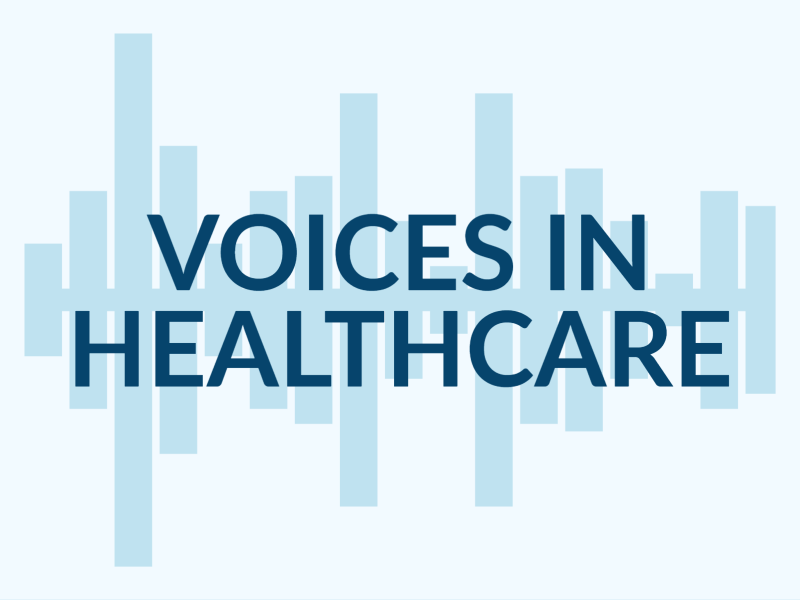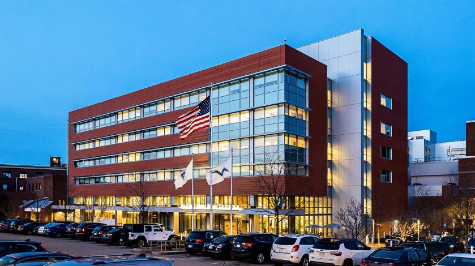South Shore Hospital: “We Physically Have No More Space”

While nearly every hospital in Massachusetts is at or near full capacity, South Shore Hospital – located in the center of regional facility closures and service disruptions – literally does not have any more space to handle additional patients.
Every licensed, legal patient space in the hospital – hallways, converted conference rooms, single rooms converted to doubles, and more – is full.

“We physically have no more space,” said South Shore Health’s Chief Medical Officer Jason Tracy, M.D. “We’re running 550 inpatients in a 374-bed hospital.”
Due to its location in Weymouth, well south of the cluster of hospitals in Boston, South Shore Hospital has always drawn patients from a region once served by Quincy Medical Center, two hospitals in Brockton, one in Norwood, as well as Steward Health Care’s Carney Hospital in Dorchester, and the Beth Israel Leahy Health hospitals in Milton and Plymouth.
But in 2020, the last vestige of Quincy Medical Center – its emergency department – closed, followed by the flooding and closure of Steward Health Care’s Norwood Hospital, the February 2023 fire at Signature Brockton Hospital that has yet to reopen, and the abrupt closure of the large Compass Medical group in May 2023. Each of those events resulted in patients, and ambulances, streaming to South Shore Hospital. And then the Steward Health Care disruption occurred at the end of 2023, which resulted in patients moving away from Steward’s Good Samaritan Hospital in Brockton, as well as Carney, and towards South Shore Hospital. (Good Sam itself had provided important relief when Signature Brockton closed.)
The Numbers Behind the Issue
“After the Signature Brockton fire, we very rapidly saw about a 15% increase in emergency room visits, and then it stabilized over the summer,” said South Shore Health’s President & CEO Dr. Allen Smith, who has led the system since November 2020. “But when the latest news started to come out about Steward last summer, then even more patients from the Brockton region – who were probably Good Sam patients – started coming to us. And then the Steward bankruptcy news added to it even more.”
Tracy said that since the Signature Brockton Hospital closure, South Shore Hospital’s emergency department volume has increased 27%. Now 365 patients per day are coming through its ED, whereas pre-pandemic the number was about 275. Each successive hospital closure since Quincy Medical Center has led to more ED visits at South Shore Hospital. And the more patients that visit the ED, means the hospital is admitting more patients – a 38% increase in medical/surgical inpatients since Brockton Hospital closed, according to Tracy.
After the Brockton Hospital fire, Smith’s team projected the fallout and immediately hired 80 additional traveler nurses, at great expense, to handle the expected influx of patients.
“We were committed to three things,” Smith said. “First, that every patient from the Brockton region would feel welcome here and that from a social and cultural standpoint we would meet those needs. Two, we knew we had to invest in quality and make ourselves an even higher-quality institution. And third, we were going to make sure that we were protecting our employees and that entailed having reasonable staffing to handle the additional patients.” Smith said that in addition to the cost for travelers, South Shore expended many dollars on overtime and incentive pay.
Addressing the Crisis
A few initiatives underway at South Shore Hospital have helped address the capacity crisis. First, Smith said, is keeping a focus on the facility’s length-of-stay innovations that pre-dated the crisis. Teams within the hospital coordinate very closely in moving patients through the care process. A simple step of arranging for transfers to a post-acute early in a patient’s recovery process, instead of waiting to the last moment, shaves tenths of a day off length of stay, which translates into open beds.
Tracy highlighted the health system’s investment in Mobile Integrated Health (MIH) and hospital-at-home programs. MIH is for patients who require same-day urgent visits for triage and limited treatment; those patients – 15,000 over the past four years – are visited at home by South Shore Health paramedics. The South Shore Health Hospital at Home program, which started at the beginning of June, is for patients who require inpatient-level hospital care and are stable enough to receive it in their homes. Many hospitals across the state have undertaken, or are about to start, MIH and at-home programs and the innovations are, as Smith says, “exciting” as to what can be accomplished outside of a hospital’s walls.
But in the case of South Shore Hospital, neither of those innovations, or the state’s recent flexibilities regarding urgent care (see related story), are enough to fully alleviate the current capacity problem.
“Every initiative and program helps,” says Smith. “But the ideal for us is that Signature Brockton re-opens as soon as possible and Good Sam remains open. Even those openings are not a complete panacea, but they allow us to be even more efficient with our length-of-stay work, and it allows us to invest more in behavioral health to help solve that problem. It allows us to do a lot of things.”

 Massachusetts Health & Hospital Association
Massachusetts Health & Hospital Association